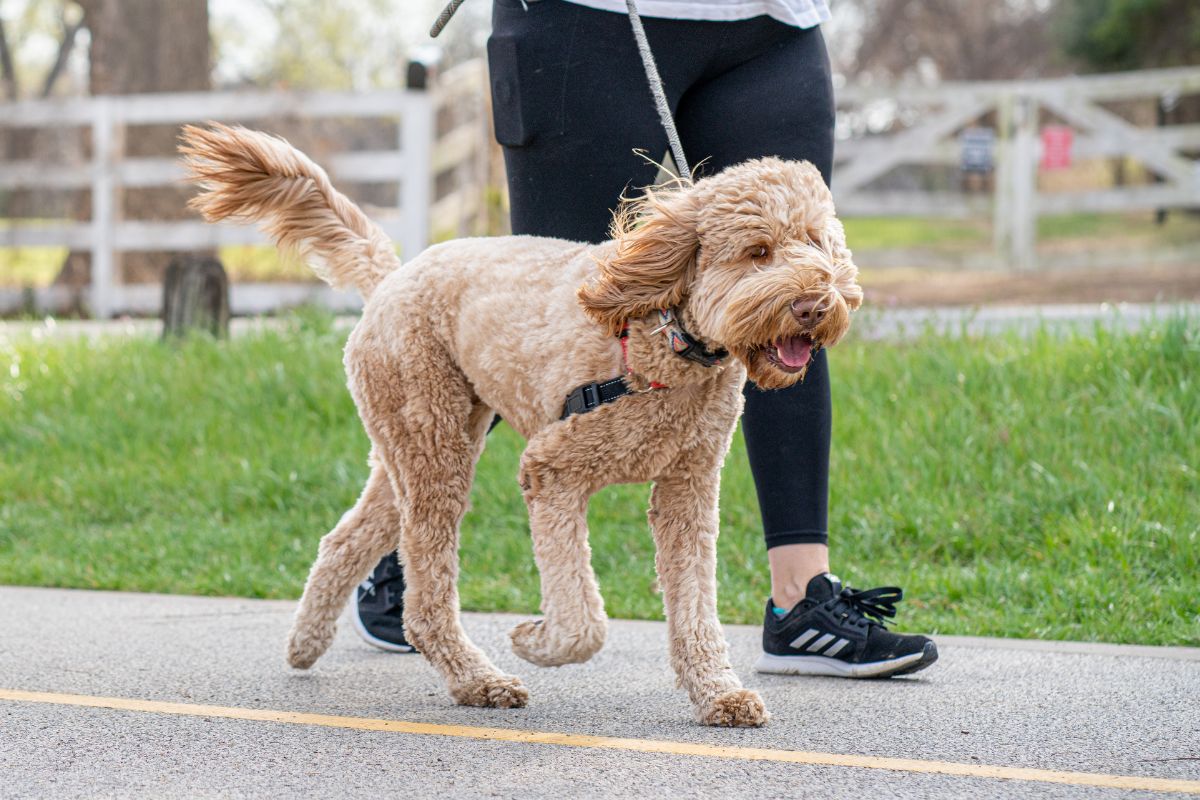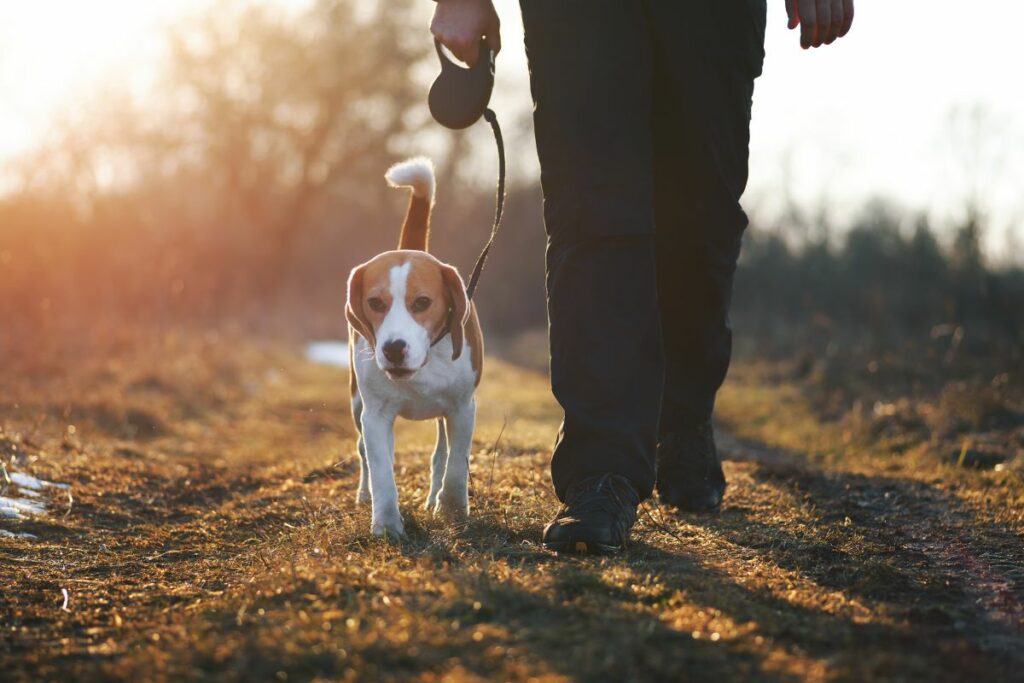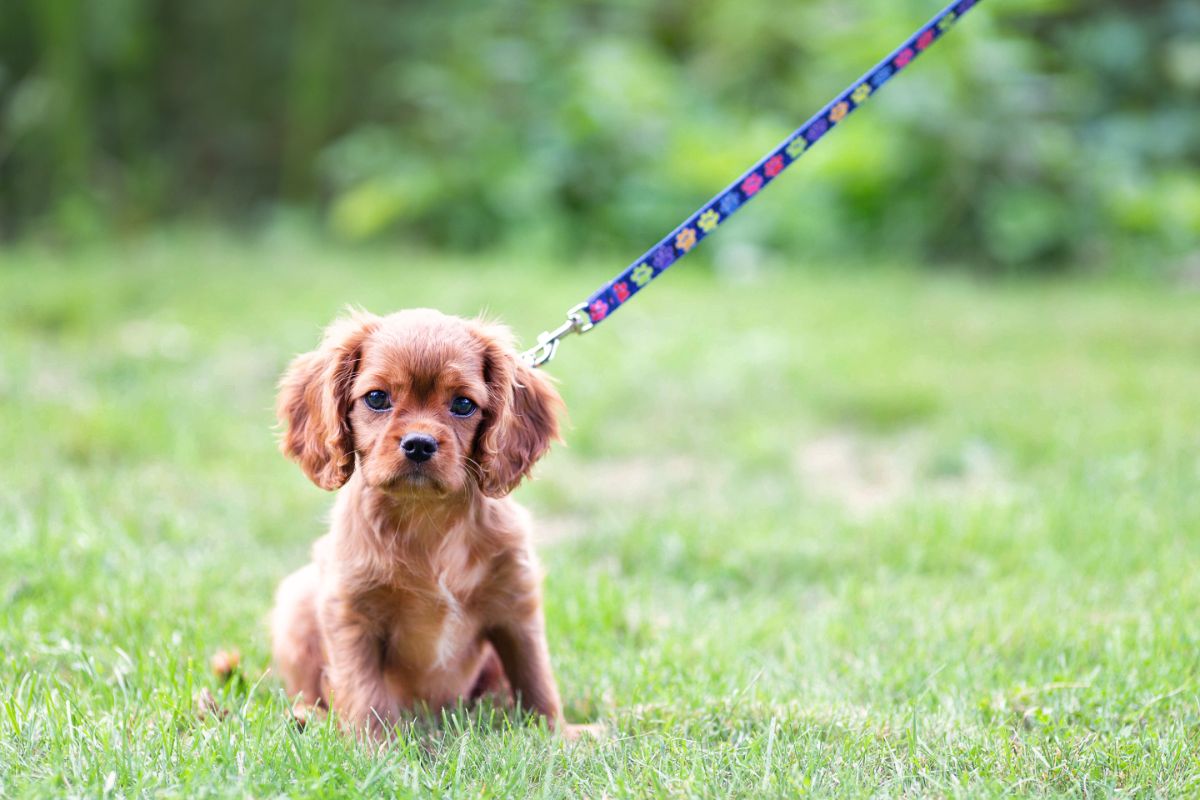Training is essential in keeping your dog happy, healthy, safe, and behaving as they should.
Most owners will train their dogs with the basics: sitting, lying down, coming when called, and going to their beds, but there is so much more that you can do with your dog.

Teaching your dog to heel is one of the most beneficial things that you can do for them.
You will have heard other owners saying the command heel when out on walks, but you may not be sure what this means, or what is expected of the dog.
If you are interested in learning about heelwork, then we can help you out.
In this guide, we will cover everything there is to know about teaching your dog to heel, including why you should implement this training technique, and what benefits it has for you and your canine companion!
What’s The Deal With Heel?
Heeling is not something all dog owners want to do with their furry friends. But, if you like to let your dog off a lead in public spaces, then teaching them to heel is an essential part of owning a dog.
Heelwork involves having your dog focused on you, your pace, and what you are doing as the owner.
While dogs do not like to walk at the same pace of their owners, and love to explore, it is a great way of building the bond between you two, and getting your dog to use its brain, providing excellent mental stimulation.
So, what is a heel?
What Is A Heel?
A ‘heel’ is the term we use for when your dog is by your side, and staying by your side while you are moving or walking.
If you are on a walk, and your dog is off leash and exploring, when you say the command ‘heel’, they will need to return quickly to your side, and either sit or walk next to you at your pace.
The heel position is when you are standing next to your dog, and the heel of your foot is in line with your dog’s front paws.
Some dog owners are very strict with this, especially if training their dogs to compete in competitions. However, there is some leeway.
As long as your dog is by your side, you should see no problems.
If you want to be exact about the dog’s placement, then the dog’s front paws should not be in front of where your feet are, and they should be pretty much in line with or next to your feet.
Some owners prefer the dog to be slightly behind them, so that the owner is in control of the movement and where you go from there.
Your dog is therefore aware of your position when it is in a heel position, and should be focusing on you.
Why You Should Try Heelwork With Your Dog

Heelwork primarily teaches your dog not to pull on a lead, and will walk nicely by your side. This is best for when you need to keep your dog under control, or close to you.
For instance, if you are crossing the street, or you are in a crowded area, or if your dog could be in danger, you can teach them to heel so that they are close to you and safe.
As mentioned, heeling provides your dog with a lot of mental stimulation, as they have to focus and listen to the commands.
They also have to keep their position next to you, which can make them engage their minds more.
It also implements a sense of leadership between you and the dog, and helps to relax some dogs if in stressful or busy situations.
Which Dogs Will Thrive With Heelwork?
All dogs can learn to heel for their safety and enjoyment. However, some dogs thrive more with mental stimulation and training.
For instance, working dog breeds such as German Shepherds, Belgian Malinois, Border Collies, Siberian Huskies and Labrador Retrievers will do well at heeling, and will need the extra mental stimulation to keep them happy and healthy.
When Should Your Dog Be Heeling?
Your dog can learn to heel at any point. This can help them focus on you as the owner, and put you in control.
If you are out on a walk, and your dog is sniffing, off leash, and enjoying themselves, you can call ‘heel’ to get them to come back to your position,and focus on you.
You should ensure that walks combine loose leash walking, off leash walking (if trained) and heelwork.
You as the owner can decide when it is free-roaming time, and when it is time to return to heel.
Most dog behaviorists will recommend that you have 50/50 heel time and explore time where the dog can sniff and walk at their own chosen pace (see also “Ways To Stop Your Puppy From Sniffing Everything On Walks“).
This can be done whenever, so that you can build a bond with your dog, and to give them some mental exercise and stimulation along with physical exercise. However, a heel has a much more potent purpose.
Heeling keeps your dog by your side and under your control and guidance at all times.
Therefore, if you are in a busy environment, or a potentially dangerous environment, you can call your dog to ‘heel’ to ensure their safety.
For instance, if walking around sidewalks or near roads, then your dog can heel by your side to prevent them from walking into traffic or becoming distracted by certain stimuli.
Alternatively, if you are in a crowded area, or around lots of people and children, having your dog heel by your side can help you keep them in your sight, and not pose a risk.
In some areas, many dogs may be off leash, and some could be reactive or not wanting to interact with other animals.
If your dog can learn to heel, you can call them to you in times of need to prevent them from being involved in a scuffle, or to prevent them reacting to other dogs.
What Exactly Is A Focused Heel?
There are various kinds of heels for dogs. Most owners will train their dogs to heal functionally, for the purpose of keeping them close and safe.
Maintaining a heel position next to their owners can be mentally stimulating, tiring and relaxing for dogs.
This is great for helping the owner regain control, and for dogs that do not enjoy being leashed.
A functional heel means that the dog can explore, but they are also aware that when you say so, the dog has to return to you and heel by your side. The dog knows to take direction from you.
Then we have a focused heel. This is the sort of heelwork that you will see in dog shows, where the dog is entirely focused on the owner at all times.
The dog will be making eye contact, and watching the owner’s every move.
This can be fun to train your dog in short periods, but dogs do prefer to be running and exploring on their walks, rather than going at your pace.
In a focused heel, there is no room for distractions, and the dog has to be looking at you, so it’s a good idea to mix focused heels with functional heels, and the regular off leash dog walk so that your dog can have some fun with it.
Final Thoughts
To summarize, a ‘heel’ is when your dog comes to walk by your side, or stays at your feet. They should not walk out ahead of you, or lead you.
It is a great way to establish a bond between the owner and dog, while also allowing you to have full control over your dog at all times.
- How To Teach Your Puppy Their Name Easily! - July 18, 2023
- Is Your Puppy Counter Surfing? Find Out How To Stop It! - July 18, 2023
- How To Train Your Puppy For Car Rides: Everything You Need To Know - July 18, 2023










